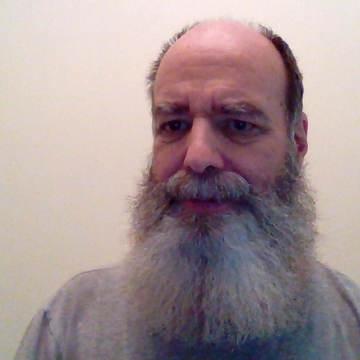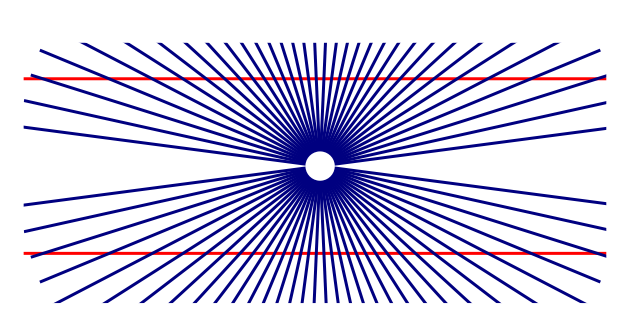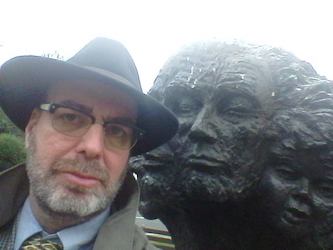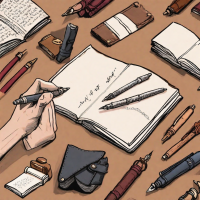Conspiracy theories are all the rage these days. You can’t watch a program on MSNBC what without one of the hosts talking about a conspiracy theory. You can’t pass a public television blaring Fox News without some conspiracy theory huckster being featured pimping their theory. We’ve got QAnon, the Big Lie, and #COVID19 Resisters all shoveling their loads of manure onto anyone who will stand still long enough to receive a shovel full.
So, we here at Ye Olde Blogge got the bright idea of doing a deep dive into conspiracy theories and these three in particular with a twofold focus:
- First, we’ll explain what they are and the psychology that makes them so appealing.
- Second, we’ll discuss how they form and what makes them so damn resilient.
- And third, we’ll look more carefully at the big three to determine how much of a threat to our democracy they really are. This is important because, as it turns out, not all of them are equally threatening, yet we tend to think of them not as three separate theories but as one big amorphous blob of a theory.
Silly us. We thought we could do all that in 1500 words or less! Ha ha! So, after writing 2,000 words on the first point, cooler heads have prevailed. The single post has been split into three and major revisions were undertaken to avoid the dreaded TL;DR moniker.
For this series, we’ll be relying on several resources: (a) an episode of David McRaney’s podcast, You Are Not So Smart; (b) the research of Joseph Uscinski (also interviewed in the podcast, but also using his Guardian article from last year on QAnon); and (c) the research of Anni Sternisko including her interview on the podcast, her paper on collective narcissism predicting belief in and dissemination of conspiracy theories and the dark tetrad personality traits and conspiracy theories.
Most discussions of conspiracy theories fall into one of two unsatisfying categories: (1) Ooh, look at all the foolishness these people believe. The HBO series, Q: Into the Storm is the best most recent example of that genre. While interesting and entertaining, it doesn’t do too much for helping us do anything than satisfy our voyeuristic desires. And (2) the psychological causes of conspiracy theories. You’d think that with so many of those out there, Ye Olde Blogge wouldn’t feel it necessary to add to the heaping mass of articles and posts, but most of them are too superficial to be satisfying. Probably trying to avoid TL;DR territory.
Lucky for you, we’ve been exploring many of the cognitive tendencies that lead many of us down that conspiracy theory rabbit hole. We’re going to look at what they are, the cognitive tendencies that lead to them, and who is most vulnerable. I think the answers may surprise you.
What are Conspiracy Theories for $1,000.00, Alex?
A conspiracy theory is a belief that a powerful group of people are secretly working towards a sinister goal. That’s essentially every conspiracy theory right there, right? Pick your group; pick your goal.
- The Kennedy assassination.
- The groups: the Mafia, Castro, Ted Cruz’s father
- The goal: Kennedy must die!
- Flat earth.
- The group: scientists, the government?
- The goal: Who the fuck knows, amirite? Why would anyone want to convince us the earth was round if it were flat?
- Moon landing.
- The group: scientists, the government?
- The goal: What? I can’t work with this nonsense. Why would anyone want to convince us we landed on the moon, if we hadn’t?
- #COVID19 is a hoax.
- The group: scientists, government?
- The goal: These things make absolutely no sense! What’s the point of convincing a group of people that a deadly pandemic is a hoax?
- A cabal of billionaires is trying to destroy our democracy.
- The group: billionaires.
- The goal: transferring the nation’s wealth to the 1% while the rest of us live in abject poverty and misery dying young.
Making It Make Sense
Notice a pattern in our examples? Most of the groups involved are little understood groups. They get a lot of press. They’re in all the movies and TV shows, but no one really know what they do or how they do it, and yet, they have a huge impact on our lives. One of the first things that conspiracy theories do for us is make the complex simple and make the unknowable known. They explain the world.
Most of us, though, are exposed to the same complex set of problems and unknowable world as conspiracy theorists, but we don’t go down that rabbit hole, right? So, something more than being a simpleton in a complex world is needed to explain the acceptance of conspiracy theories.
Finding Patterns in all the Wrong Places
I don’t believe in coincidences, the rogue lone wolf police detective who was the only one who saw what was really happening and would stop at nothing to find the TRUTH sneered. Yeah. We’ve all heard the cliche that police officers don’t believe in coincidences often enough that we think it is true. It isn’t. Things do happen by coincidence. If you don’t accept that, you’re not dealing with reality, and we know what we call people who don’t deal with reality, right? MAGAs or cray cray or both.
As a species, we abhor coincidences. If two things occur together, then we assume they are connected causally. Once again, it is a trait that served us well in the hunter-gatherer world of the savannah but is failing us miserably in our urban ultrasociality world.
We need two things to survive: first is a group of people to live with. We are social. It is our greatest strength as a species. A lone human being suffers greatly from loneliness and it shortens their life. And second, we need a shared understanding of the world that is just accurate enough to allow us to survive. Realize that our perceptions of the world do not reflect the way it really is but are just a close enough facsimile to allow us to survive. We need to share that facsimile in our group.
To form this understanding, we talk to each other. We share facts, observations, and interpretations. Together, we come to a shared and accepted understanding of what the world is like. When something unknown or unexpected comes up, like the novel coronavirus did. We have to come to an agreement on what it is and how best to respond to it. We have to make it fit into the pattern of the world that our group has already adopted.
Anxiety, the Tail that Wags the Dog Named Conspiracy
When something new and threatening enters our world, we freak out. We worry a lot. It causes beaucoup anxiety. Remember February 2020? It’s called adjustment reaction. It is what we do when life hands you lemonade and you need to turn it into lemons.
Usually, when we find ourselves in novel dangerous situations we react in predictable ways: we seek more information; we avoid doing things that are now deemed dangerous; we envision how we might be affected; and we become overly cautious.
When #COVID19 first reared its ugly head in February 2020, we didn’t all get out our latest issue of JAMA and begin reading up on corona viruses. We organize controlled experiments to study the virus and its effects. We listened to the news and the people the news quoted. The news generally interviewed experts and government officials. People that have assumed positions of responsibility and trust who would tell us the right things to do in such dangerous times. We trusted them. We invested them with authority. We were going to accept what they said.
We started to reform our world view with the novel coronavirus added to it. We were anxious. We found out what we had to do to protect ourselves and those we loved from the danger, and we did it.
In many senses that’s what people who believe in conspiracy theories are doing, too. They are listening to trusted sources of information.
We believe our experts. We don’t know. We believe. That’s what these people are doing, too. They believe their “experts.” Ours happen to be right; theirs wrong. Use it as an avenue for developing some empathy for them.
We were all anxious about #COVID19, even the deniers, hoaxers, and resisters are that’s why they’re out there drinking horse laxative or whatever the latest crap you’re supposed to be doing to protect yourself from it is. It is why they are fighting so hard against masks and vaccines — but more on that in part two.
In general, though, we’re all anxious about something or a class of things. Some of us are more anxious than others. It is this anxiety and how you deal with it that makes you vulnerable to conspiratorial thinking and determines which conspiracies you’ll adopt and which you won’t.
We were all anxious about #COVID19 but not about the government, scientists, and government scientists. There’s a reason why people cluster around a conspiracy theory. It is a shared anxiety about a complex issue and a little understood group.
When you’re anxious about something you think about it. You ruminate on it. You do some research on it, meaning you find out more information about it, some of it accurate, some of it wrong. You build a worldview around it. It’s when you meet others who share your anxiety and begin exploring their explanations and developing that shared worldview that conspiracy theories begin to develop and grow.
Look for the other two installments of the series tentatively called, Conspiracy Theory 201: Keeping the Wheels on the Bus Going Round and Round, and Conspiracy Theories 301: The Very Real Damage Followers and Conspirators Do

If you liked this explanation of what a conspiracy theory is and who believes them, then leave us a mysterious sign that the shadowy group hatching nefarious plans was here!
- Leave a comment: What are your favorite conspiracy theories? Who in your circle has been a believer or dabbler? What parts of the explanation sound right and what do you think we’ve gotten wrong?
- Like the post: Nothing rewards like a long list of likers. Use the like button at the end of the post.
- Rate the post: Give me a clearer idea of what you thought by giving it a star rating. It was.a five-star post, wasn’t it? It was, right? Use the stars just below the title.
- Share the post on social media: If you liked this post, you’re friends, family, and acquaintances probably will too, so use the social media buttons below to share it frequently and often all over the Interwebs.
- Join the email list: We’ve got a list of tens that get the automated email every time I hit publish. You could too just by leaving an email address in the blank below.
Image Attribution
“Serfs Up ! Illuminati All Seeing Eye” by Serfs UP ! Roger Sayles is licensed under CC BY-ND 2.0
Categories: Cognitive Psychology



















Hello CALICOJACK. Great idea for a series. I would ask you expand it to include how to talk to those who believe in conspiracies without driving them away but to pull them to the reality that is true. Many people I know have lost family members to the right wing media talking points and it has caused deep rifts in families. It seems to do no good to present facts to these conspiracy believers, they simply dismiss them as a hoax, fake news, lies. Then both sides end up getting upset and digging in. Thanks. Hugs
LikeLiked by 1 person
Howdy Scottie!
That’s a great idea. There are techniques Mostly it involves staying calm, not talking about the conspiracy theories. And presenting reality as is. The idea is that they need an anchor or tether to reality. More on that in 201.
I never discussed Trump with my mom. She passed halfway through his administration, and we both knew better than to bring it up. They were avid Fox News enthusiasts for the past twenty-odd years, though. We found a way to remain in relationship without fighting over that nonsense. Some people insist on bringing it up, though.
Her husband once brought up climate change. I don’t know why. The man is a complete idiot. What my mom saw in him, I’ll never know. I remarked. “If y’all are right and there is nothing that we can do about climate change, then trying does no harm than spend some of the ample money that we have as a nation and a world. But, if y’all are wrong and there is something we can do about climate change and we do nothing, then we’ve just condemned ourselves to much more difficult lives, misery, and death. What’s wrong with trying?” He shut up.
My mom taught me logic and strong reasoning skills. She gave me, what I imagined, was an admiring look. She may have just been grateful that we didn’t argue or had gas. It’s hard to tell sometimes.
Huzzah!
Jack
LikeLiked by 1 person
Reblogged this on cabbagesandkings524 and commented:
Calico Jack begins getting a grip on this thing we call “Conspiracy Theories”.
LikeLiked by 1 person
There you go again, Jack, biting into another triple-decker burger (or, maybe its a Ruben Sandwich with a pound each of everything).
Perhaps the prime example of finding patterns where there are none is those pictures we think we see in the night sky and the names we give them, and then, the influence with which we credit them in our lives.
LikeLiked by 1 person
Howdy Bob!
I never could see the man in the moon. I even saw a picture on the Interwebs explaining how it worked. I know which shadows are supposed to be the face, but it still doesn’t look like a face to me. Other than Orion’s Belt and the Big Dipper, I could never find constellations, either. Back in the day before we had big city light pollution, looking at the night sky must have been some of the only prime time viewing available. I know I never tire of it when I’ve been camping.
Huzzah!
Jack
LikeLiked by 1 person
I never saw a face in the moon either – Orion and the dippers, yes, but I couldn’t see the Dippers as bears. I can’t imagine how anyone could not be awed and fascinated by the night sky without light pollution.
LikeLiked by 1 person
I remember talking about the stars and the Milky Way in a middle school class in Viet Nam of mostly Vietnamese nationals. One boy raised his hand and said, “But, teacher, Sai Gon has no stars.” I just felt pity in the deepest part of my soul to realize that none of those kids had ever seen the Milky Way and didn’t even understand why.
One of the saddest parts of living in Far East Asia is the inability to see the night sky. Either you’re in the city with all the light pollution or it’s the monsoon and cloud cover. I have rarely seen anything up there during the twenty-odd years I’ve lived here.
Huzzah!
Jack
LikeLiked by 1 person
That is sad, but even here in a relatively small city in America, it isn’t much better.
LikeLiked by 1 person
It’s getting harder and harder to get out far enough to have an uninterrupted view of the night sky.
When we were in NZ, we were told that the Southern Hemisphere looks out towards the edge of the galaxy and the stars are less intense. The Northern Hemisphere looks towards the center and that it what makes the Milky Way. It was true. The stars were less intense — still beautiful — but fewer of them. Also, the Southern Constellations often consisted of only three stars, which I thought was funny as in peculiar and reflecting a lack of imagination among those forming the constellations but perhaps it was owing to a relative poverty of stars to work with.
Huzzah!
Jack
LikeLiked by 1 person
Well, the more dots there are to work with, the more ways there are to connect them.
LikeLiked by 1 person
Just like conspiracy theories! Hahaha!
Jack
LikeLiked by 1 person
Pattern seeking is hard wired – Is that movement in the grass the wind, or a lion? Did that other person bump into me by accident, or was that an attack (micro aggression)? Finding the pattern to answer such questions is a matter of survival.
LikeLiked by 1 person
Howdy Bob!
I’m having trouble getting 201 posted, but should do it within the next six hours — RL is intruding on my blog, AGAIN! But, after work today, I should be able to finish it and publish. This is the focus on 201.
Huzzah!
Jack
LikeLiked by 1 person
Not to worry – we won’t dock you pay if it’s a little late.
LikeLiked by 1 person